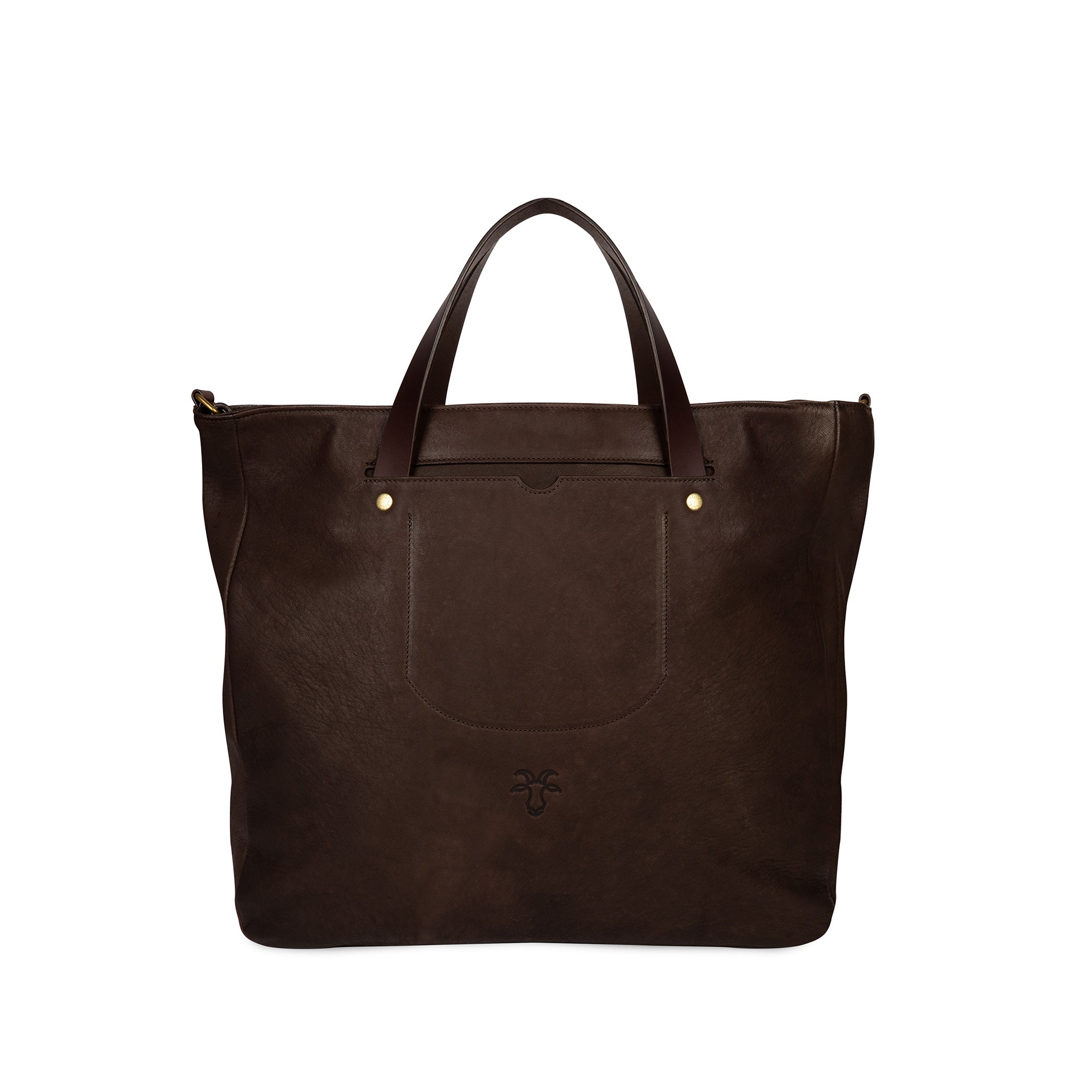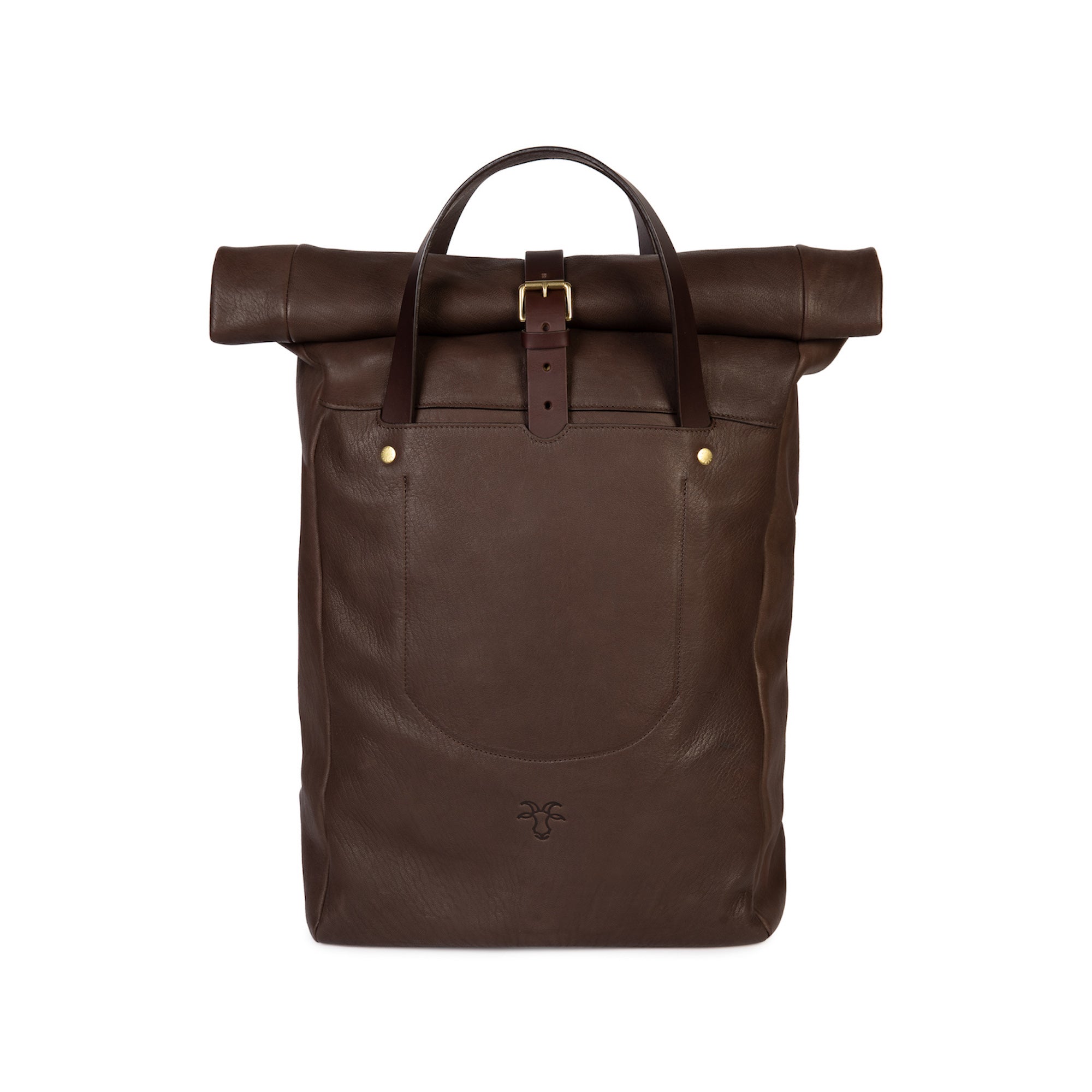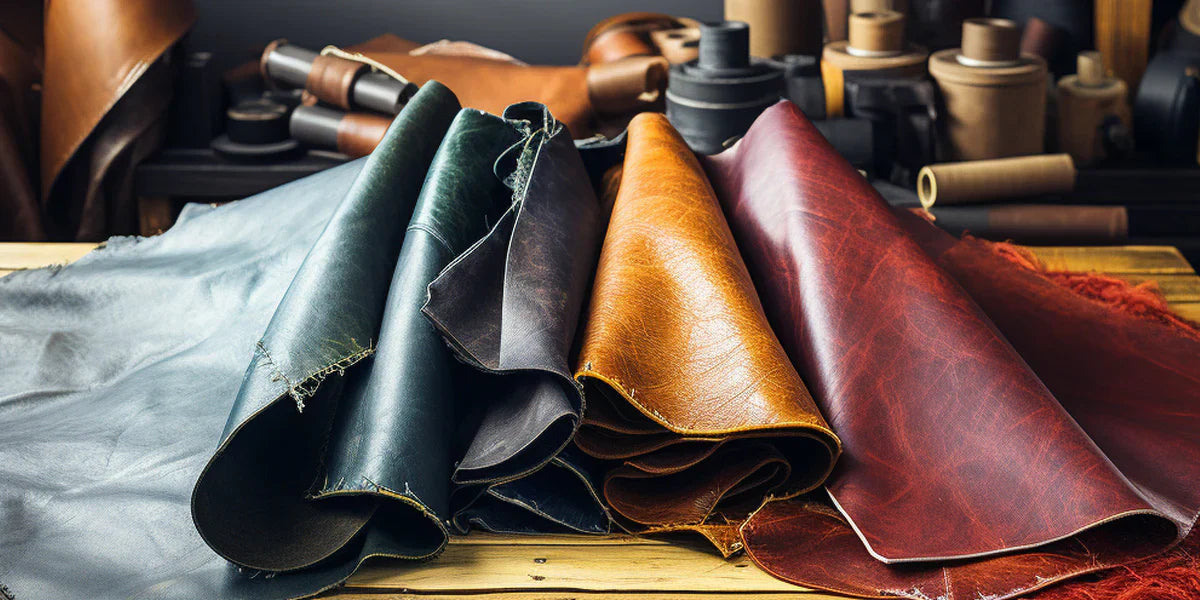Cow leather is the most commonly used type of animal hide. Due to its longevity, it’s a popular material for clothing, accessories and furniture and it has been used for centuries. But here at Billy Tannery, we specialise in goat leather products and this means we often get asked the difference between the two.
We started using goat skins when we discovered that thousands were being thrown away or burned each year as they were a by-product of the food industry. We didn’t want to see such wastage and set about transforming a farm building into a sustainable micro tannery. Fortunately, for us (and you!), goat skin has many wonderful properties which make it a great choice of material for leather bags, leather chef's aprons, and leather wallets.

So, let’s take a closer look at cow vs goat leather. In this article, we’ll explore aspects of each including quality, sustainability, and softness, and explain what it is about goat leather that makes our products so special.
Cow vs goat leather
Quality
The quality of any leather generally depends on where you get it from and the types of leather you are talking about. Full-grain leather is the best quality leather but top-grain leather, which is thinner and more pliable, is more common.
Cow leather is generally an economical choice. This is because it is readily available and due to the size of the animal, each hide is larger. At Billy Tannery, we ensure the quality of our goat leather by only using full traceable hides which are vegetable-tanned right here in the Midlands.
Sustainability
Just as the quality of any leather can vary, so can its sustainability. For example, natural leather can be biodegradable if it is not tanned using chemicals or treated with other pollutants.
The entire supply chain of any leather must be considered in its sustainability too. Much of the world’s cow leather comes from developing countries such as China and India where it is then shipped across the globe to be processed.
Our goat leather is procured from British producers and farmers, such as Cabrito Goat Meat, so we know exactly where it has come from and the miles it has taken to reach us. We vegetable tan the hides and recycle 90% of the water used in the process. Even the finishing of our leather is done by local independent businesses to reduce our carbon footprint as much as possible.
Durability
Generally speaking, cow leather is the most durable option. It is thick and hard wearing which is why it is used for items that encounter regular use such as sofas and jackets. A 5,500-year-old cowhide shoe was even unearthed in a cave in Armenia. If that's not a testament to its durability, we don't know what is.
Goat skin should not be underestimated for its robustness though. It is still up there as one of the most durable types of leather and when well looked after, it can last for decades.
Learn more about the most durable leathers.
Thickness
Cow leather tends to be thicker than goat leather. This makes it stiffer as a material with very little stretch. This is why some cow leather shoes take time to break in and can be somewhat tight to begin with.
Goat leather, on the other hand, is thinner, softer, and more supple than cow leather. This also means it is more lightweight than cow leather which makes it incredibly comfortable to wear.
Grain
The grain of leather refers to the composition and appearance of it. You can liken it to wood, where the naturally occurring lines are what makes each variety different.
Cow leather has a pronounced grain and texture whereas goat leather has a finer grain and a smoother yet distinct pebble-like texture. Over time, both types of leather will take on a unique patina, influenced by how it is handled and its exposure to the elements.
When it comes to cow vs goat leather, it’s clear that both have many merits that have and continue to make them popular choices for crafting high-quality goods. However, when you pick Billy Tannery goat leather products, you aren’t just choosing something created from a fantastic material. You are supporting environmentally conscious, circular design. Learn more in our goat leather guide.
Introducing deerskin leather
We’ve also recently branched into crafting high-quality parkland deer leather products as we continue our sustainability mission.
In the last few years, and particularly as a result of Covid-19 restrictions, deer numbers in the UK grew significantly. The hospitality sector saw a steep decline in demand for venison and less human interference meant deer were able to reproduce in higher numbers. To avoid the deer population having a detrimental impact on the environment, planned deer culling has taken place. This has led to deer skins becoming available and these are what we are using for suede leather products including our Parkland Tote Bag and Parkland Sneaker.

As a new offering, you can find out more about it in our deerskin leather guide. We also have a rundown of deer leather vs cow leather if you want to see how the two compare.
Shop our collection of leather products including our new deer leather bags and bestselling goat leather accessories.



































